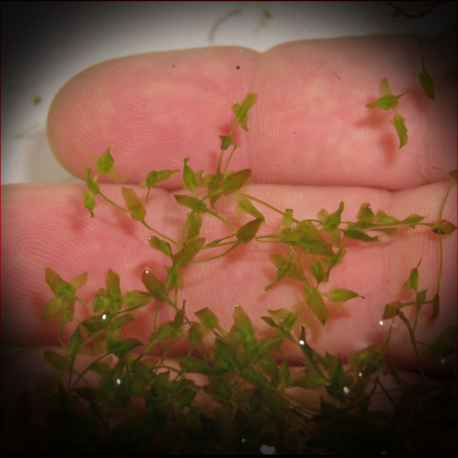More info
Datasheet
| Aquarium Compatible | yes |
| Plant Outdoor | yes |
| Plant Emersed Growth | yes |
| Plant Growth | fast |
| Temperature Tolerance | 4°C / 39.20°F - 30°C / 86.00°F |
| Temperature | 10°C / 50.00°F - 22°C / 71.60°F |
| Carbonate Hardness | 2-21 kh |
| pH Value | 5-8 ph |
| Light | low-high |
| Carbon Dioxide (CO2) | 5-40mg/lmg/l |
| Nitrate (NO3-) | 10-50mg/lmg/l |
| Phosphate (PO43-) | 0.1-3mg/lmg/l |
| Potassium (K+) | 5-30mg/lmg/l |
| Iron (Fe) | 0.01-0.5mg/lmg/l |
General Description
Lemna trisulca, commonly known as Star Duckweed, is a lesser-known aquatic plant within the Lemna genus. It distinguishes itself by forming floating populations beneath the water surface, creating large clusters with its crosswise-growing fronds. Each frond has a toothed transparent margin, adding to its unique appearance. This plant is often found in stagnant water bodies with low phosphate levels and a conductivity exceeding 100 Mikrosiemens/cm.
Aquarium Suitability
With an easy difficulty level, L. trisulca is a suitable addition to aquariums, thriving in a range of water conditions. It can be placed in both emersed and submerged growth setups, making it versatile for various tank designs.
Demands and Hardiness
Star Duckweed is a fast-growing plant that requires a moderate level of care. It can adapt to a wide range of temperatures (10-22°C) and demonstrates resilience to colder environments, with a reported tolerance down to 4°C. The plant's growth and propagation primarily occur through fragmentation and the production of daughter plants.
Aquascaping & Usage
Ideal for surface coverage, L. trisulca adds a natural aesthetic to aquariums with its floating clusters. Its low to high light requirement makes it flexible for different lighting setups, contributing to the overall balance of the aquatic environment.
Propagation
Propagation of Lemna trisulca is effectively achieved through methods such as fragmentation and splitting. Daughter plants can be separated and replanted to encourage the growth of new clusters, aiding in the plant's reproduction within an aquarium setting.
Habitat and Distribution
In its natural habitat, Lemna trisulca is commonly found in stagnant waters with poor phosphate content, often growing alongside other duckweed species such as Lemna and Spirodela. Its distribution spans regions with suitable conditions for growth, where it forms dense populations below the waterline, adapting to varying water parameters.

